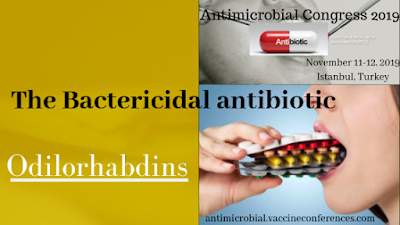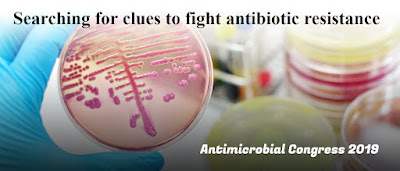New class of Antibiotics disrupts protein synthesis
Antimicrobial Drugs : Odilorhabdins
Odilorhabdins, or ODLs, a new
class of antibiotics which disrupts protein synthesis are produced by symbiotic
bacteria Xenorhabdus Nematophilia,
found in soil-dwelling nematode worms that colonize insects for food. The
bacteria Xenorhabdus Nematophilia
actually helps to kill the insect and, importantly, secrete the antibiotic to
keep competating the other bacteria away. Till now, these nematode-associated
bacteria and the antibiotics they make have been largely understudied. To
identify the antibiotic property present in the xenorhabdus bacteria, researchers screened 80 cultured strains of
the bacteria & isolated the active compounds showing properties of
antibiotics, studied their chemical structures and engineered more potent
derivatives. ODLs mainly act on the ribosome, which is the molecular machine of
individual cells that makes the proteins it needs to function of bacterial
cells.
Like
many clinically useful antibiotics, ODLs work by targeting the ribosome, but
ODLs are unique because they bind to a place on the ribosome that has never
been used by other known antibiotics. The ODLs when binds to the ribosome, the
antibiotic disrupts its ability to interpret and translate genetic code. When
ODLs are introduced to the bacterial cells, they impact the reading ability of
the ribosome and cause the ribosome to make mistakes when it creates new
proteins. This miscoding corrupts the cell with flawed proteins and causes the
bacterial cell death. Many antibiotics can slow bacterial growth, but the
antibiotics that actually kill bacteria, called bactericidal antibiotics, are
rare. The bactericidal mechanism of ODLs and the fact that they bind to a site
on the ribosome not exploited by any known antibiotic are very strong
indicators that it has the potential to treat infections that are unresponsive
to other antibiotics.
Now-a-days
WHO is also focusing on antibiotic resistant, which is one of the gigantic
threats to global health today and a significant contributor to longer hospital
stays, higher medical costs and increased mortality? The researchers, academics
& pharma industries have been collaborated with each other , which is
needed to combat the growing and global threat of antibiotic resistance.
Currently, pharma professionals, microbiologists & academia are working
together for this.




Comments
Post a Comment